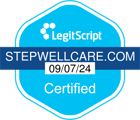August 23rd, 2024
The Connection Between Eating Disorders and Addiction: Understanding and Addressing the Overlap
Introduction
Eating disorders and addiction are two intricate and often intertwined conditions that profoundly affect an individual’s physical, mental, and emotional health. While they might seem unrelated at first glance, there's a compelling connection between these disorders. This post delves into the link between eating disorders and addiction and discusses effective strategies for treating them together.
Understanding Eating Disorders and Addiction
Eating disorders are mental health conditions characterized by an unhealthy relationship with food and body image. These disorders include anorexia nervosa, bulimia nervosa, and binge eating disorder, each with its own set of challenges. On the other hand, addiction is a chronic disease marked by compulsive drug or alcohol use despite adverse consequences.
How Are Eating Disorders and Addiction Connected?
The connection between eating disorders and addiction manifests in several ways:
Coping Mechanism: Individuals with eating disorders may turn to drugs or alcohol to cope with the emotional and physical distress their condition causes. This can, over time, lead to addiction.
Development of Disordered Eating: Conversely, those struggling with addiction might develop disordered eating patterns as a result of their substance use, which can trigger or exacerbate an eating disorder.
Shared Risk Factors: Both eating disorders and addiction are influenced by a combination of genetic, environmental, and psychological factors. This overlap makes individuals with one condition more vulnerable to developing the other.
Treating Eating Disorders and Addiction Together
Given the intricate relationship between eating disorders and addiction, an integrated approach to treatment is essential. Below are some components that may be included in such a treatment plan:
Comprehensive Assessment: A thorough evaluation is crucial to identify the specific eating disorder and addiction, assess the severity of each, and detect any co-occurring mental health conditions. This step forms the foundation for a tailored treatment plan.
Medication-Assisted Treatment (MAT): MAT can play a significant role in easing cravings and withdrawal symptoms, particularly for those dealing with opioid or alcohol addiction. It's an important tool in the overall treatment strategy.
Behavioral Therapies: Approaches like cognitive-behavioral therapy (CBT) and dialectical behavior therapy (DBT) are invaluable. They equip individuals with the skills to manage cravings, cope with stress and triggers, and maintain long-term sobriety.
Nutritional Counseling: For those with eating disorders, nutritional counseling is essential. It helps in building healthy eating habits and fosters a positive relationship with food, which is crucial for recovery.
Support Groups: Participating in support groups such as Overeaters Anonymous (OA), Food Addicts Anonymous (FAA), Alcoholics Anonymous (AA), and/or Narcotics Anonymous (NA) can provide a sense of community. These groups offer understanding, encouragement, and practical advice from others facing similar challenges.
Conclusion
The connection between eating disorders and addiction underscores the need for a comprehensive, individualized treatment approach. By addressing both conditions simultaneously through strategies like medication-assisted treatment, behavioral therapies, nutritional counseling, and peer support, individuals can work toward lasting recovery. If you or someone you know is struggling with these complex issues, seeking help from a qualified healthcare provider is a critical first step toward healing and reclaiming life.
By understanding and addressing the overlap between eating disorders and addiction, we can create more effective pathways to recovery, helping individuals lead healthier, more fulfilling lives.
Related Articles





